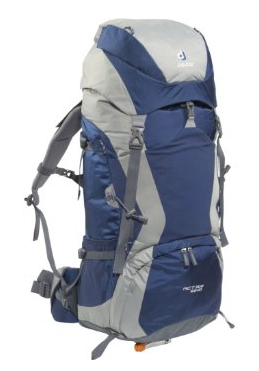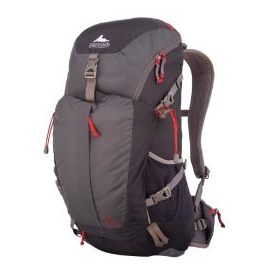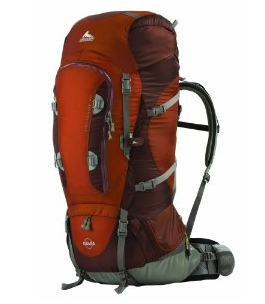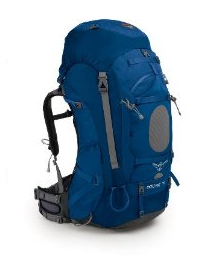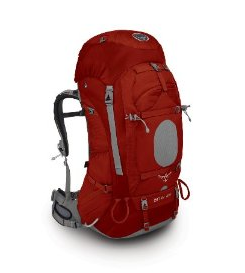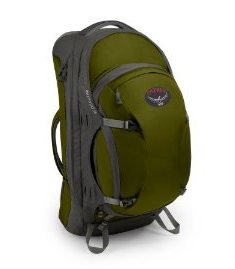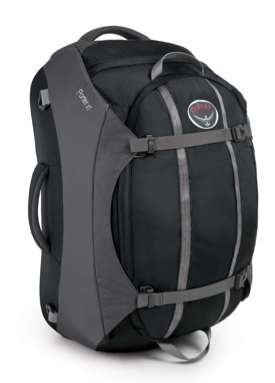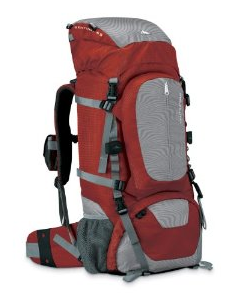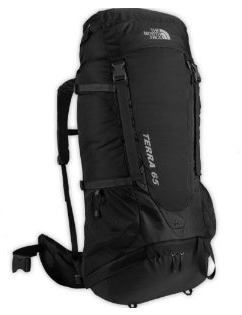How to Pick a Backpack for your Trip
Whether you’re planning a short 2-3 week stint across Europe or a full-fledged 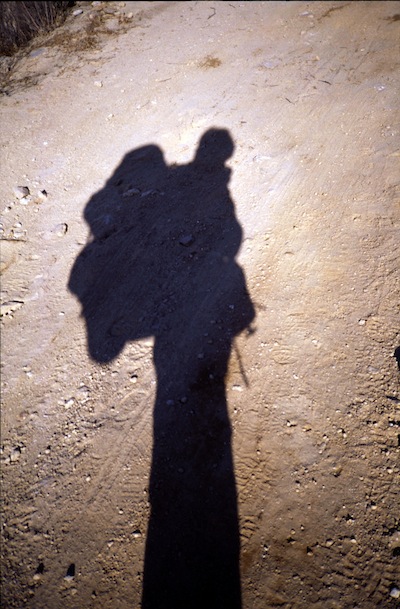 trip around the world for a year, figuring out how to pick a backpack for your trip is probably one of the most important decisions you will make… After all, it’s just you and your backpack! The one thing that goes everywhere and carries everything you need…or think you need! After spending a year traveling around the world, I’m here to answer those common questions you’re asking yourself when deciding how to pick a backpack. Questions such as: What size is best? How much should I spend? Is a $100 backpack equally as good as a $300 one? Should I have an attachable day pack? How much weight should I expect to carry? What brands and models are best? What the hell should I take in my backpack?
trip around the world for a year, figuring out how to pick a backpack for your trip is probably one of the most important decisions you will make… After all, it’s just you and your backpack! The one thing that goes everywhere and carries everything you need…or think you need! After spending a year traveling around the world, I’m here to answer those common questions you’re asking yourself when deciding how to pick a backpack. Questions such as: What size is best? How much should I spend? Is a $100 backpack equally as good as a $300 one? Should I have an attachable day pack? How much weight should I expect to carry? What brands and models are best? What the hell should I take in my backpack?
When I decided I was going to travel the world, I spent weeks researching the best backpacks and in the process, I learned all the little things to consider. And as you read this, keep in mind that no one backpack is best for everyone. They are too user specific and everyone has different needs. The type you choose to bring along should reflect the type of backpacking trip you’re taking and hopefully by the end of this, you’ll be better prepared to make your decision in choosing the best backpack!
So what size backpack do I need?
Typical sizes for a traveler range between 60L and 90L. As a general rule, the smaller the better. However, there are things you’ll want to ask yourself such as: Will I need a sleeping bag? Do I plan to buy a lot of souvenirs or gifts along the way that I don’t want to pay to ship home? Will I be camping often and also, how often do I want to be doing laundry? If you will be ‘Couchsurfing‘ a lot or camping often, you’ may need a bag large enough to allow room to fit a small sleeping bag as some Couchsurfing hosts may expect you to have one. And if you plan to camp a lot, you’ll need to have extra room for all that additional gear that you’ll need night after night.
As for souvenirs you buy along the way, if you are just taking a short trip (less than 6-8 weeks) it may make sense to just keep the stuff in your bag without the expense of shipping things back home. However, on a longer trip such as a gap year, you’re bound to buy things here and there so you’ll need at least some extra space to carry it for a week or two before making it to the post office to ship it back home in bulk since you may not be able to find a post office in certain locations (such as in the middle of the Sahara Desert).
And as for clothes, pack as little as possible! When it comes to clothes, trust me, you really don’t need too many outfits. Yes you’ll get sick of your clothes after a while but better to ditch them or send them home after a while and buy new clothes than to bring too many. And believe, no one is going to care (or notice) what you’re wearing when you’re backpacking. You’ll rarely be hanging out with the same people anyway for more than 2 or 3 days!
So other than a few random items, what you pack for a year should roughly be the same as what you pack for a three-week trip! I’m proof that this is true and in another post, I show exactly what I brought on this trip and I ended up going with a 60L backpack! Yes it was small. But was it big enough? Yes! Plenty big! However, I had only planned to camp-out a few times and when I did, I was on a tour so they typically provide everything you will need so bringing along a sleeping bag was never needed. As for souvenirs bought along the way, I would just send home a package every month or two. And to make one last point, when you ultimately decide on your size, go ahead and pack everything in it to see how much room you have once you’ve purchased it. You should have some room left over and if not, make space! Ditch what you can because you’ll need extra room to pick up those souvenirs along the way… or the extra beer/liquor you’re taking onto the train!
How much to spend on a backpack?
The first time I went backpacking, it was only for a short time in Europe and was less than two months worth of travel. I was fresh out of school and on a tight budget so I ended up with a cheap (and way too large) backpack. It was uncomfortable to wear and because it was so large, it became burdensome when traveling on crowded buses and trains but I decided to just put up with it. However, by the second week into my trip, I wished I’d have upgraded. When you realize just how much time is spent carrying your backpack along with how well the storage compartments are laid out among other things, you quickly realize it’s worth the money to buy the best you can get for your budget even if it means cutting it somewhere else to come up with the money. So do you need to spend a lot for a comfortable backpack? No, of course not! All that matters is if it works best for you.
When preparing for a long-term trip, especially one where you’ll be traveling from one place to another every 2-4 days, you’ll need a backpack as comfortable as you can get. Just consider how many lines you’ll be standing, the waiting at airport terminals, how many hiking trips you’ll take and the number of miles/kilometers you’ll walk each day. You’ll quickly realize your backpack truly is an ‘extension’ of yourself when on the road. Better to get one that is comfortable, light-weight, offers you the most flexibility in use along with great quality, that way it will make it home in one piece! Nothing could be more annoying than to have zippers bust or handles or straps rip when you’re in the middle of the Gobi Desert! So to answer my first question regarding whether a $300 backpack is better than a $100 one? The short answer would be yes. In terms of long-lasting quality, design, weight and fit, things will be better on higher priced packs. However, if a $150 backpack fits better than the $250 one and quality of materials is about equal, go with the cheaper one that is more comfortable!
How about an attachable day pack?
These are wonderful, so if you can find a backpack that has one that is easily detachable, it’s even more convenient since you’ll find yourself using it almost daily. They are also great because unlike an entirely separate day pack, when you are on a long walk, especially on a hot day, you don’t have to carry the small daypack on your front along with your main pack on your back which is something to consider since you can simply attach it to the main backpack…
What other things should I look for?
As you look at all the various packs, the first thing to pay close attention to is the quality and design of the straps. Are they padded well enough, is there a ‘chest’ strap that you can use to keep the backpack centered, and are the main straps wide enough to be comfortable on a long day of travel?
Other things to look for are solid hip belts, which help to distribute the load. You’ll want to look at how well these fit as well since you don’t want to create bad pressure points on your hips from wearing it all day.
Lastly, consider the design and layout of all the pockets and other compartments on the backpack. Are they in easy to use locations? Do the zippers work well? Do you have to take your pack off every time you need something on its side? Do you have to access everything from the top of the pack or can you lay it down and open it like a suitcase? If it has an attachable day pack, consider these things as well…
How much weight should I carry?
Obviously weight is a big consideration even if your bag has wheels because lets face it, eventually you’ll have to lug it around whether it’s up a steep staircase or trying to pull it out from the luggage bin on the bus when 50 other packs are sitting on top of yours! Lighter is better!! A good weight range to target for a full backpack is between 20-30 pounds (9-14 kilo) with anything over 30+ pounds (14+ kilo) generally being on the heavy side. You could also use 20% of your body weight as a good factor in determining ideal backpack weight. So factor this in when looking at the backpack’s product weight when ’empty’.
And again, for short 2-3 week trips, heavy can be ‘OK’ even though you’re probably bringing way more than you really need. However for a RTW traveler, you’ll find yourself tossing out the things you don’t need after that first month as you realize you are sick of carrying the added weight for things you barely use on a routine basis. And aside from truly asking yourself what you really need and don’t need on the trip, consider this: Most things you think you need to bring from home can readily be bought all over the world in just about every country!
So once you’ve narrowed down your packing list, the next thing you can do is bring accessories and clothes that are the most lightweight for their product category, such as a travel towel. Many wonderful travel items are offered through REI and other travel stores that can have multiples uses such as ‘stuff sacks’ which can do everything from hold dirty laundry, keep shoes confined in your bag or even double as a pillow by stuffing in that sweater to use on a train. So it definitely helps to carry things like this as well as the smallest and lightest things you can find. I remember a traveler I’d met while backpacking that pulled out a massive flashlight the size of my arm!
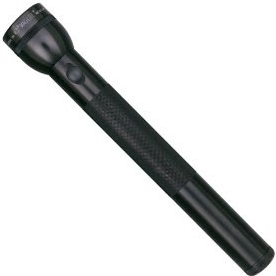 Was this person doubling this flashlight for a weapon!?! This person had been lugging around an item that weighed about 2-3 pounds for the past four months when they could have purchased a tiny LED flashlight like this one
Was this person doubling this flashlight for a weapon!?! This person had been lugging around an item that weighed about 2-3 pounds for the past four months when they could have purchased a tiny LED flashlight like this one
weighing a mere 10 grams along with a battery that would likely last an entire year!
What ‘type’ of backpack should I buy?
For most backpackers, a normal pack with straps is all you need. But lets just consider for a second the type of environments and places you plan to visit and how you are planning to travel. If you are planning a lot of camping excursions or if you want to have full mobility to carry your pack through any conditions imaginable, the obvious choice is a backpack with straps. However, don’t be too quick to rule out standard luggage. If you are just planning a trip to China or just about anywhere in Europe for instance and plan to stay in hostels, guesthouses or hotels, you could get by just fine with rolled luggage. After all, in developed countries, just about every road is paved with a sidewalk. And if you plan to be traveling by air a lot, rolled luggage is the best option for frequent trips to the airport. This is especially so if you’re planning a short trip unless you plan on really getting off the beaten path.
For me, I wanted the best of both worlds which brings up the third option. The ‘hybrid’ backpack… Basically, it’s a normal backpack with straps but it also has two wheels and a pull out handle. If you’re not familiar with these, here is a video of the hybrid backpack I decided to go with based on the type of trip I was planning on taking. After almost a year of travel, I was able use it as normal luggage and rolled the pack about 95% of the time. Stairs were typically the only time I would have to carry it which was usually only on short stints. There were just a few times when I used it as a backpack when on camping trips or riding a motorcycle and for that, it worked fine. And because it was small and I packed light, even when I had to carry it for quick trips up and down stairs, it was never an issue. Here is the link on Amazon for this Osprey Meridian
A hybrid isn’t for everyone though… For those needing room for a lot of camping gear, etc, this probably wouldn’t work out unless you go with a larger size hybrid. Also, it’s not very tall so if you have a lot of weight in the pack, its distribution will be different from a standard pack. However, if you plan to be on trains, planes and buses quite often, along with roads and sidewalks that are typically paved or smooth, this is a great option. And to convert it to a backpack when needed is only about a two-minute process.
And so… what brands & models have top ratings?
Who offers the most quality, the best price and the most comfort and features? Because I personally can’t speak to all brands, I needed to do a little research. Here is what I found out based on actual travelers feedback for long-term trips taken including my own experience when researching a backpack for myself….
The Top 10 Backpacks based on Ratings & Feedback:
Deuter ACT Lite 65+10 Backpack
Osprey Meridian 22 / 60 Hybrid Backpack
Osprey Women’s Ariel 65 Backpack
Osprey Women’s Waypoint 65 Backpack
North Face High Sierra 65 Backpack
These 10 are based on user feedback and ratings but keep in mind, the best backpack is the one that works for YOU the best and for the type of trip you’re planning on taking. So as you weigh your options, decide what is going to work best based on your budget, your trip, and what you’re bringing along in that backpack….
Best of luck on your search and your trip! Happy Travels….
If this article has helped you or you have more questions, I’d be happy to hear from you!

